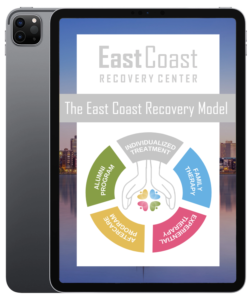Picture this: It’s well past midnight and the house is silent—except for the restless footsteps pacing the hallway. The person you love is wide-eyed, talking fast, hardly blinking. By dawn they collapse, sleeping so hard you can’t wake them for work. Over the next weeks you notice a hollowed-out face, vanishing paychecks, and secrets piling up in every drawer. Your gut says something’s terribly wrong, but you can’t quite put your finger on it—until you learn the unmistakable cocaine addiction signs. Recognizing those signs, whether in yourself or someone close, can spell the difference between crisis and recovery.
How Cocaine Rewires the Brain and Body
Cocaine works like a master pickpocket inside your brain. It slips between nerve cells and blocks dopamine reuptake, causing the “feel-good” chemical to flood the reward circuit. That surge feels electrifying—confidence spikes, fatigue evaporates. But as levels crash, the brain is left drained and edgy. Over time, natural rewards (good meals, a hug, a hard-earned “A”) feel dull, so the user chases the drug’s synthetic thrill instead. The stimulant also batters the body: heart rate and blood pressure soar, blood vessels clamp down, and a single binge can trigger heart attack or stroke . Those neurological and cardiovascular haymakers are what give rise to the physical, behavioral, and psychological signs below.
Physical Cocaine Addiction Signs
Your eyes can reveal what your loved one’s words hide.
- Dilated pupils and a bright, glassy stare—common even in daylight because adrenaline forces pupils open
- Sudden weight loss & loss of appetite—cocaine blunts hunger hormones, so clothes hang looser week by week
- Runny or bloody nose—snorting irritates nasal tissue; frequent sniffing or nosebleeds become routine
- Insomnia followed by day-long crashes—the stimulant keeps users wired for hours, then exhaustion hits hard
- Rapid heartbeat, chest pain, or shortness of breath—signs the heart is straining under stimulant stress
- Skin sores or track marks—from injecting or compulsive skin-picking (formication)
- Excessive sweating & overheating—body temperature climbs as metabolism races
When several of these warning lights flash together—say, dilated pupils, dramatic weight loss, and nosebleeds—it’s time to consider cocaine as the culprit.

Behavioral Cocaine Addiction Signs
- Secretiveness and lies. Quick bathroom trips, locked doors, vague alibis—protecting the drug becomes top priority.
- Financial free-fall. Cocaine is costly; missed rent, pawned valuables, or constant “emergencies” hint that paychecks are funding binges.
- Neglect of work or school. Punctuality vanishes, projects go unfinished, and once-reliable people start no-showing important events.
- New party crowd; old friends ghosted. Users gravitate toward peers who won’t judge the habit, isolating themselves from honest relationships.
- Risk-taking and legal trouble. From reckless driving to fights or arrests, cocaine lowers inhibition and clouds judgment.
These patterns form because cocaine’s dopamine fireworks teach the brain that getting high outranks every other goal. Responsibilities, hobbies, even parenting can slide into second place.
Psychological Cocaine Addiction Signs
Even when the body sits still, the mind may race.
- Extreme mood swings. Euphoric highs flip into irritable crashes or profound exhaustion within hours.
- Anxiety and panic attacks. Elevated norepinephrine keeps the “fight-or-flight” switch stuck on high.
- Paranoia or hallucinations. Chronic users may feel watched, hear voices, or sense “bugs crawling” under skin.
- Impulsive decisions. The prefrontal cortex—your brain’s brakes—misfires, leading to risky spending, infidelity, or violence.
- Lingering depression and apathy. As dopamine stores deplete, everyday life feels gray, driving further use just to feel “normal.”
Because these mental shifts aren’t always visible, loved ones often miss them—until an emotional explosion or psychotic break forces attention.
Taking Action: Turning Knowledge into Help
Start the Conversation with Care
Approach during a sober window, speak in “I” statements, and describe behaviors you’ve noticed: “I’ve seen you lose weight and disappear for hours; I’m worried.” Expect denial; plant the seed anyway.
Set Healthy Boundaries
Refuse to cover bills or make excuses for missed work. Enabling delays recovery. Balance empathy with firm limits.
Seek Professional Treatment
Overcoming cocaine addiction will take much more than just willpower. Evidence-based therapies such as Cognitive-Behavioral Therapy (CBT) and contingency management are known to reduce cravings and build new habits. Medical monitoring helps manage depression, anxiety, or heart-related issues during early abstinence.
Why East Coast Recovery Is Uniquely Equipped to Help
Located near the calming Massachusetts shoreline, East Coast Recovery was founded on the belief that recovery flourishes in a supportive, mission-driven environment. We tailor care to each client’s biology and story, offering:
- Day Treatment: This is full-day clinical care, five days a week, for those who need structure without 24-hour residence.
- Partial Day Treatment: Three to five evening sessions weekly; ideal for balancing treatment with work or school.
- Standard Outpatient Services: Weekly counseling plus recovery-focused group therapy to reinforce long-term wellness.
Dual-diagnosis support addresses underlying anxiety, trauma, or depression. From beachside mindfulness sessions to evening transportation for community meetings, our compassionate team always tries to meet clients where they are (both literally and emotionally) to guide them toward lasting freedom.
A Final Word—and Invitation
If the warning lights described here feel painfully familiar, now is the moment to act. Cocaine addiction signs are not a verdict—they’re a call. East Coast Recovery stands ready with science-driven care wrapped in unwavering compassion. Reach out today, and let’s start building a future free from cocaine’s grip.
Frequently Asked Questions
What are the very first cocaine addiction signs I might see?
Early signs often hide in plain sight: erratic sleep (“wired” nights, marathon naps), dilated pupils indoors, unexplained weight loss, and sudden bursts of chatty confidence followed by lethargy. You might also notice cash disappearing or secrecy around schedules. One sign alone may be innocent; together they draw a clearer picture.
How can I tell occasional use from addiction?
Addiction shows a pattern of escalation: more frequent use, bigger doses, failed attempts to quit, and continued use despite relationships or work unraveling. If someone plans life around cocaine—or feels miserable without it—those are hallmarks of cocaine use disorder.
Why does cocaine make people paranoid?
The same dopamine rush that fuels euphoria also overstimulates brain regions tied to threat detection. Add surging stress hormones, and perception can tilt toward suspicion or fear. High doses or prolonged binges may trigger true stimulant-induced psychosis.
What treatment really works?
Behavioral therapies dominate: CBT teaches coping skills; contingency management rewards drug-free urine screens; community reinforcement builds a fulfilling, drug-free lifestyle. Medications treat co-occurring anxiety or depression, but no pill alone fixes cocaine addiction—therapy and social support are key.
Can people fully recover from cocaine addiction?
Yes. The brain’s plasticity means damaged reward circuits can rebound with sustained abstinence. National data show many regain careers, rebuild families, and thrive sober. Recovery often includes periodic lapses, but each return to treatment strengthens long-term success.










